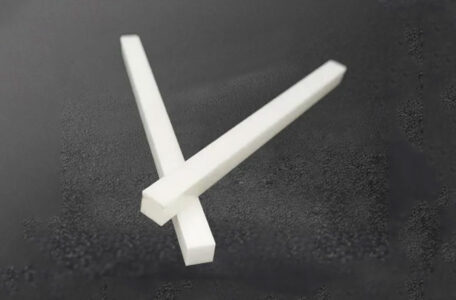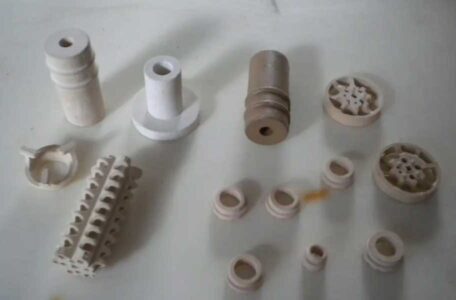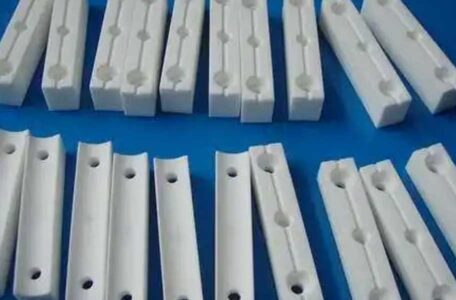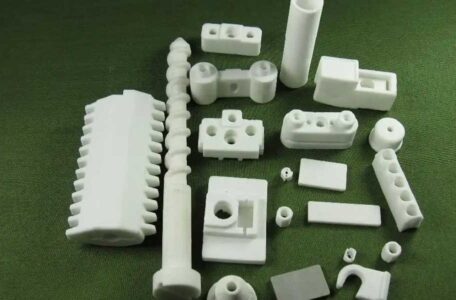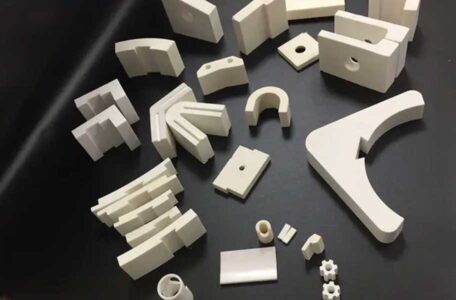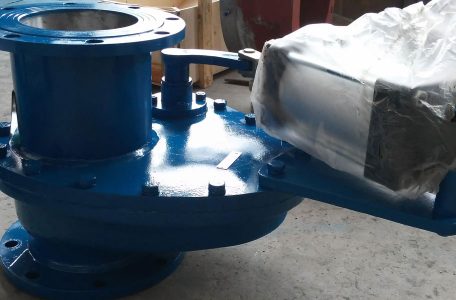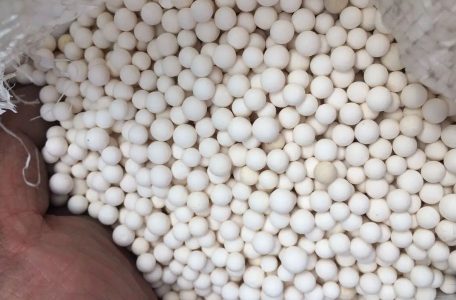Alumina ceramic sheets are also known as wear-resistant alumina ceramic linings, high-alumina linings, wear-resistant ceramic linings, alumina ceramic patches. Alumina ceramic sheets are mainly made of al2o3 as raw materials and rare metal oxides as solvents. It is calcined at a high temperature of 1700 ° C. So how do we identify alumina ceramic sheets? First of all, we have to look at the surface of the alumina ceramic sheet. The surface of a good alumina ceramic sheet is very smooth, without black spots on the surface, and the color is uniform. Secondly, we can identify the alumina ceramic sheet by measuring the density. Knowing the content of alumina, there Read more
Blog
Silicon carbide ceramics outperform other precision ceramic spare parts in some industrial applications. What are the characteristics of silicon carbide porous ceramics? Nuoyi Precision Ceramics will share with you: Silicon carbide porous ceramic material is made from corundum sand, silicon carbide, cordierite and other raw materials through molding and special high temperature sintering process. It has the advantages of high temperature resistance, high pressure resistance, acid, alkali and organic medium corrosion resistance, good biological inertness, controllable pore structure, high porosity, long service life, and good product regeneration performance. Filtration and separation of various media, noise reduction of high-pressure gas exhaust gas, gas distribution and electrolytic membrane, etc. Properties Of Silicon Read more
Zirconia ceramics are widely used in modern industry and life. Let us briefly introduce its main application areas. 1. Mobile Phones And Other 3C Electronic Fields Zirconia ceramics have no signal shielding, drop resistance, wear resistance and folding resistance. At the same time, the appearance is warm and moist like jade, and the hand feel is good. It is widely used in the field of 3C electronics such as mobile phones. Mainly used for mobile phone backplane and other mobile phone structural parts. 2. The Field Of Smart Wear Compared with metal, zirconia ceramics have better wear resistance, smooth surface, good texture and no oxidation. The famous Swiss “Radar” brand, Read more
Ceramic Rods Due to the different use of each client station, a variety of different sizes of ceramic rods will be extended. This part can be produced according to the needs of each household. Ceramic Screw Machines and equipment in the semiconductor and optoelectronic industries need to use corrosive chemicals with high acidity and alkalinity. The screws used in the machine also need to consider whether they can resist acid and alkali corrosion. Therefore, many screws in the machine are made of ceramic screws. . Focus Ring It is mainly used in etching machines in the semiconductor and optoelectronic industries, so the machine is also in contact with chemicals for Read more
What is the color of alumina ceramics? The white ceramics we see in our daily life account for most of them, but there are also other colored ceramics. Why do the same alumina ceramics have different colors? Is the color of alumina ceramics light yellow impure? Actually not. In fact, alumina ceramics with AL2O3 content below 99 are pure white, and alumina ceramics with 99 ceramics and above are light yellow. If the color is not light yellow, it will turn light yellow when exposed to the sun for a long time. The color of the products produced by alumina ceramic manufacturers is white and gradually turns light yellow. On Read more
Because their sintering temperature is as high as 1650-1990 ° C and the transmission wavelength is 1-6 μm, they are generally made of molten glass to replace platinum crucibles; use its light transmission. It can be used as a sodium lamp tube because of its properties and corrosion resistance of alkali metals; it can be used as an integrated circuit substrate and a high-frequency insulating material in the electronics industry. The Main Components Of Alumina Ceramics:Ordinary alumina ceramics are divided into 99 porcelain, 95 porcelain, 90 porcelain, 85 porcelain and other varieties according to the content of Al2O3. Sometimes those with Al2O3 content of 80% or 75% are also classified Read more
What is Alumina Ceramic Coating?Alumina ceramic coatings include: alumina coating, alumina-titanium oxide coating and nano-alumina coating. The layer transitions to a multi-layer or gradient gradient layer. Beijing Naimer Technology uses plasma sprayed alumina to prepare structural composite coatings and functional gradient coatings. Alumina ceramics is a ceramic material with alumina (Al2O3) as the main body, which is used in thick film integrated circuits. Alumina ceramics have good conductivity, mechanical strength and high temperature resistance. It should be noted that ultrasonic cleaning is required. Alumina ceramics is a kind of ceramics with a wide range of uses. Because of its superior performance, it has been widely used in modern society and Read more
The technical method of densifying a granular ceramic body and forming a solid material is called sintering. Sintering is a method of removing the voids between the particles in the body, removing a small amount of gas and impurity organic matter, and making the particles grow and combine with each other to form a new substance. Electric furnaces are widely used as heating devices for firing. In addition to normal pressure sintering, that is, pressureless sintering, there are also hot pressing sintering and hot isostatic pressing sintering. Although continuous hot pressing sintering increases the output, the cost of equipment and molds is too high. In addition, due to the axial Read more
The feeder is used in: Glass production. During glass production and process, the proportion of raw materials is prepared and melted in the kiln; the glass breaking liquid flows into the forming equipment to form a flat glass prototype, which is sent to the cold end through edge drawing and annealing, and is longitudinally cut, edge trimmed, cross-cut, It is completed by the process of edge breaking, vertical breaking, vertical splitting, slicing, inspection, stacking and packing. Feeding the raw materials into the melting furnace is the first step in the whole process, because the raw materials are sent to the Shang-temperature melting furnace with a temperature of more than 1,000 Read more
99.5% alumina powder is white powder or fine sand, with good fluidity and stable performance. It is difficult to dissolve in acid-base solution and has good sintering performance. After the alumina material is isostatically pressed and dry pressed into various shapes and sintered, its color is still white. It is usually used as a raw material in high-alumina refractory materials, electromagnetic devices, and polishing and grinding products. The density of 99.5% alumina ceramics is greater than that of 95% and 99% alumina ceramics. It has strong impact resistance and can greatly improve the grinding efficiency. The main molding methods of 99.5% alumina ceramic products are dry pressing, isostatic pressing, and Read more

Ceramic Machining Industry
- Ceramic Flange
- Ceramic Nozzle
- Ceramic Pin
- Ceramic Plunger
- Ceramic Rod
- Ceramic Shaft/Ceramic Sleeve
- Ceramic Structure Parts
- Ceramic Valve
- Ceramics Cutter
- Electronic Ceramics
- Medical Food Ceramics
- Petrochemical Ceramics
- Photovoltaic Ceramic
- Semiconductor Ceramics
- Microporous Ceramic Suction Cup
- Lithium Battery Ceramic Pump


